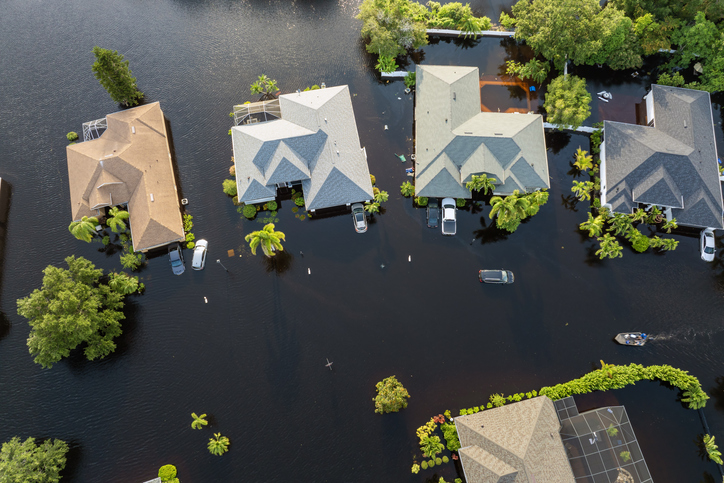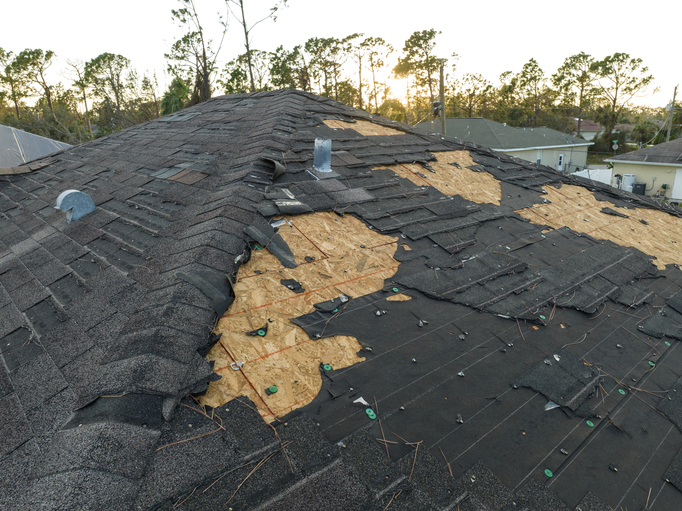When it comes to preparing your finances for a natural disaster like Hurricane Helene, which recently left a trail of devastation across the Southeast United States, the importance of being financially prepared cannot be overstated. Insurance is your first line of defense: You’ll want to maintain appropriate coverage to protect against the outcomes of major storms or other disasters.
The financial complexity of disaster preparedness extends beyond insurance. It involves safeguarding essential documents, planning for potential losses and preparing for disruptions to normal life. Most crucially, the priority in any disaster scenario is the safety of yourself and your loved ones, which means being ready to evacuate swiftly without looking back.
Here’s what you should know. And if you need help making a personalized strategy to protect your finances, consider speaking with a financial advisor.
Why Prepare for Natural Disasters?
It’s essential to prepare for the weather. Natural disasters continue to impose costs on property and lives. One way of seeing this is through major disasters, generally defined as events causing $1 billion or more in damage. In the past 20 years, these have become between two and seven times more common than they once were.
Get Good Insurance
The first thing to do is insure yourself.
First, make sure your medical coverage is effective and current. The most important thing to protect is the health of you and your loved ones. Now, in this case, even a catastrophic policy may be enough, since natural disasters tend to present saddle-shaped distributions of harm. That is, a major event tends to leave someone either unharmed or seriously injured, with minor injuries relatively rare. However, if you have the option, good medical coverage is always a better idea. It will cover more needs and will cost less if you do need care.
Second, get effective property insurance. If you are a homeowner, this means a homeowner’s policy. If you rent, get a renter’s policy, particularly since renter’s insurance tends to be inexpensive. In both cases, make sure that your policy offers thorough coverage. You don’t necessarily need to insure the forks and spoons (although, why not), but make sure to protect everything of value. A financial advisor can help you determine a fair price for an appropriate level of coverage in your scenario.
Before signing, review a policy’s details. For example, will it pay for smoke damage as well as fire? Does it offer the costs of replacement, or just a fixed amount? Does your policy protect you from water damage? Many policies omit that last and it can be important, whether a flood sweeps through or a pipe bursts. While doing so, confirm your property’s flood zone status, since you might need specific flood insurance.
And, of course, check if your policy applies to natural disasters. Many don’t.

Finally, look into insurance to cover work disruption. Now, this tends to be uncommon. However, some insurers do offer policies that can cover you in the case of a short-term disruption to your work, job or business. This is particularly the case for small business owners and the self-employed.
Keep an Emergency Fund
It’s always important to have an emergency fund on hand.
An ideal emergency fund has about six months’ worth of living expenses. You will hold it in a secure, relatively liquid account. This doesn’t necessarily need to be a depository account, but don’t lock this money up or invest it for growth. Something like a low-risk ETF might work well, for example, while a CD or individual equities could create a lot of problems.
Keep this fund untouched. Top it up if your needs grow, so that your fund grows with your expenses. Don’t try to float your family of four, say, based on your expenses as a single 20-something. But do not dip into it except at absolute need, and replace that money right away if you do.
Finally, keep some physical cash on hand. This doesn’t need to be exorbitant. In this writer’s experience, about $300 was enough for two people to afford several days of fast food, gas and cheap rooms in an emergency. (Adjust based on your own needs and the size of your family.) Tuck a few $100 bills into your wallet, then forget about them. During a natural disaster ATMs and other electronic rails can easily fail, and this will give you the cash to get by for a day or two while you figure out next steps.
Protect Critical Documents
Now, make sure you have backups of critical documents and records. This might include:
- Passports, Driver’s License, Other ID
- Birth and Death Records
- Marriage and Divorce Records
- Adoption and Custody Records
- Pet Ownership Records
- Business and Tax Records
- Social Security Cards
- Deeds, Mortgages and Leases
- Vehicle Titles
- Important Financial Documents
- Important Legal Documents
- Estate Records
- Insurance Documents (Critical during the recovery)
This is just a partial list. In a nutshell, safeguard any documents important to your personal, professional or financial life. Don’t assume that third parties will have accurate copies of these records. Those third parties may have neglected to keep accurate records or may lose their own records to disaster. In some cases, most notably insurance claims, those third parties may have adverse interests to yours.
There are many ways to protect these essential documents.
In hard copy, you can leave copies in protected storage such as a fire/weather-proof safe. You can also leave your records with a trusted third party such as a safety deposit box or on file with your lawyer. For some documents, such as deeds and birth certificates, this particularly valuable because copies may not have the same legal standing as originals. When you do not use a document frequently and the original has special legal status, it is an excellent candidate for third-party storage.
In soft copy, you can put copies of your records in cloud storage. It’s a good idea to do this for all documents. There’s little reason not to have a comprehensive backups folder on your cloud service of choice, so long as you choose a well-secured service. Do not rely on local storage (that is, your computer or phone hard drive). These devices are often lost to disasters, defeating the point of your backups in the first place.
Use Your Plan Wisely
Remember, when things go badly wrong, you have four steps in order:
- Get Out: Leave immediate danger as quickly as possible.
- Get Safe: Find someplace safe to stay for the short-term.
- Get Stable: Set up your food, shelter and financial solutions for the mid-term.
- Get Rebuilt: Rebuild after the disaster.
Your cash on hand will help you get out and get safe. This is the part where you evacuate and find someplace to stay for that first night, when power may be down and you can stay just about anywhere as long as it’s safe.
Your emergency fund will help you get stable. This is the part where you find someplace to stay for the middle period, while recovery crews are working and insurance claims have just begun. This period may last for several weeks, or even several months, which is why you want to keep that fund topped up.
Your insurance and backups will help you rebuild. This is the part where you recover belongings that made it through intact, replace property that did not, and generally put life back together after the storm.

Finally, some people like to keep a “go bag” on hand. This has mixed value. A bag packed with basic necessities (clothes, first aid kit, toothbrush, etc.) can be quite useful. That said, the risk with a go bag is reliance. Like all dangerous situations, natural disasters can escalate quickly and unpredictably. It can be dangerous, if not impossible, to recover that go bag during a crisis, when the priority is gathering your loved ones and evacuating.
Do not put yourself in a position to run that risk, which means don’t tie yourself to this bag. A go bag is useful for making sure you have a change of clothes, but don’t keep essentials like your cash and backups in it. (Again, a couple folded up $100 bills are easy to hold permanently in your wallet.) Grab your bag if time allows, and abandon it along with all other belongings once the storm has hit.
Your preparation is your protection. And remember, a financial advisor can help you strategize your finances for your goals – including preparing for the unexpected. You can use SmartAsset’s free tool to match with up to three fiduciary advisors.
The Bottom Line
Preparing for a natural disaster requires some forethought. Make sure that you have good insurance. Keep a well-funded emergency fund. And back up your critical documents. Remember: the most important thing in an emergency is to drop everything and get out. Good preparation can let you do this, because everything you need has already been secured.
Tips on Getting Insurance
- We started this piece with insurance, and we’ll end there too. Good insurance is absolutely vital to modern life, and disaster preparation is no different. But what policies you should hold depend on your specific needs. Here are eight kinds of insurance you can buy, depending on your personal finances.
- A financial advisor can help you build a comprehensive retirement plan. Finding a financial advisor doesn’t have to be hard. SmartAsset’s free tool matches you with up to three vetted financial advisors who serve your area, and you can have a free introductory call with your advisor matches to decide which one you feel is right for you. If you’re ready to find an advisor who can help you achieve your financial goals, get started now.
- Are you a financial advisor looking to grow your business? SmartAsset AMP helps advisors connect with leads and offers marketing automation solutions so you can spend more time making conversions. Learn more about SmartAsset AMP.
Photo credit: Grok, ©iStock.com/Bilanol, ©iStock.com/Bilanol
